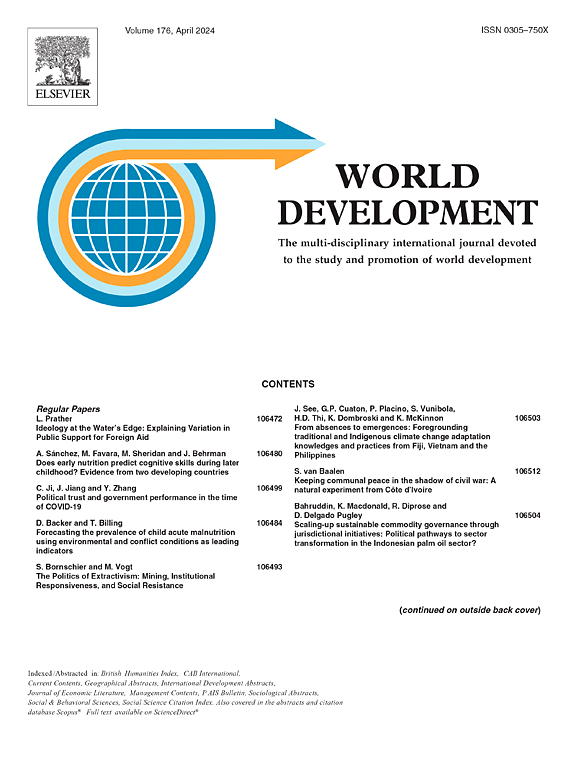The employment profile of cities around the world: Consumption vs. production cities and economic development
IF 5.4
1区 经济学
Q1 DEVELOPMENT STUDIES
引用次数: 0
Abstract
Census data for 7000 cities – three fourth of the world’s urban population – reveal that cities of the same population size in countries with similar development levels differ substantially in terms of their employment composition, especially in the developing world. Using these data, we classify cities into production cities with high employment shares of urban tradables (e.g., manufacturing or business services), consumption cities with high employment shares of urban non-tradables (e.g., retail and personal services), or neutral cities with a balanced mix of urban tradables and non-tradables. After establishing stylized facts regarding the sectoral distribution of employment in our global sample of cities, we discuss the various paths by which developing nations may urbanize through production cities – via industrialization or tradable services – or consumption cities – via resource exports, agricultural exports, or deindustrialization. Country and city-level data corroborate our hypotheses. Results on the construction of very tall buildings also provide suggestive evidence on the relationship between resource exports and consumption cities. Importantly, consumption cities seem to present lower growth opportunities than production cities, diminishing the role of cities as “engines of growth.” Understanding how sectoral structure mediates the urbanization-growth relationship and how consumption cities become production cites is thus highly relevant for policy.
求助全文
约1分钟内获得全文
求助全文
来源期刊

World Development
Multiple-
CiteScore
12.70
自引率
5.80%
发文量
320
期刊介绍:
World Development is a multi-disciplinary monthly journal of development studies. It seeks to explore ways of improving standards of living, and the human condition generally, by examining potential solutions to problems such as: poverty, unemployment, malnutrition, disease, lack of shelter, environmental degradation, inadequate scientific and technological resources, trade and payments imbalances, international debt, gender and ethnic discrimination, militarism and civil conflict, and lack of popular participation in economic and political life. Contributions offer constructive ideas and analysis, and highlight the lessons to be learned from the experiences of different nations, societies, and economies.
 求助内容:
求助内容: 应助结果提醒方式:
应助结果提醒方式:


